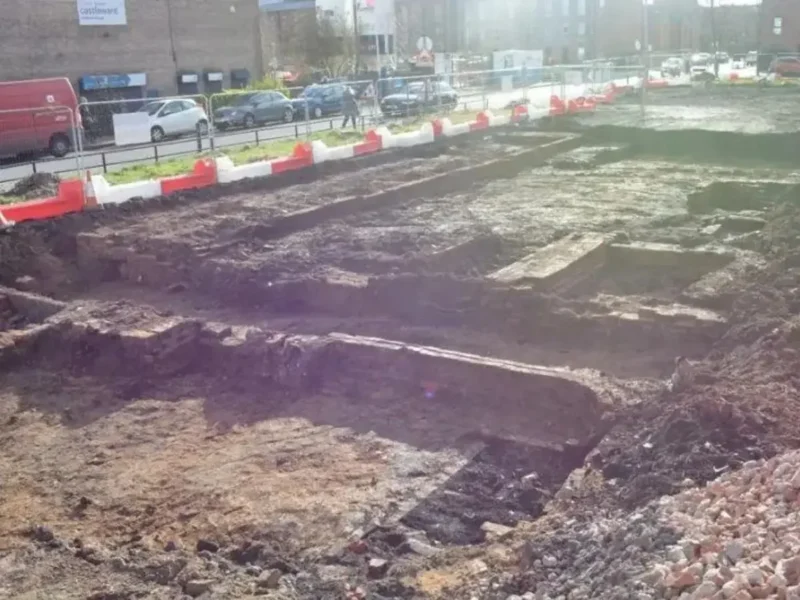Overview
The main purpose of the excavation was to further contribute to the understanding of land use and development during the mid-nineteenth century within the Castleward area.
The excavation was split into two areas: area 1 and 2.
Area 1 focused on finding evidence for a Victorian smithy which was successful, with the discovery of a smithy related cellar which contained black soot on the inner walls and a large metal beam still in situ at the top (figure 1). Area 2 focused on terraced housing dating to the 1840s. These were also uncovered successfully, with the remaining walls clearly fitting the 1899 OS maps. Behind these terraced houses were two small outhouses, likely once functioning privies, which were excavated (figure 2). A large building was also found on area 2, complete with a back yard containing a soakaway privy where significant finds were made, including three large enamel signs referring to Brooke Bond’s Tea Ltd, a large beer jug, leather shoes, glass bottles and pottery (figure 3). This building also had a cellar that we machined out, measuring 1.6 m in depth after excavation.
The Client
The client working with Ecus is Compendium Living, an experienced property development partner. They chose to work with Ecus to respect the archaeology on the land of which they are developing during Phase 3b of the project, with the next phase (4a) taking place in April.
The Challenge
The client required that we agree upon an acceptable excavation strategy with the respective county archaeologist. This was followed by an excavation which worked in accordance to the aims and objectives set out in the WSI.
The Solution
We agreed a suitable excavation plan and stuck to it through the works. Mechanical stripping of the two targeted areas occurred, and the resulting archaeology was recorded by means of photographs, GPS and drawings (1:10 scale).
Client Benefits
All archaeological site work was completed to a high standard and to the deadline set before the work began.
Conclusion
The project successfully met a range of criteria set out by the county archaeologist. The excavation confirmed that for the most part the ordnance survey maps from 1899 were accurate, and also confirmed the existence of a smithy towards the northern section of area 1. Significant finds were selectively recovered and will be processed accordingly in accordance with relevant guidelines.







